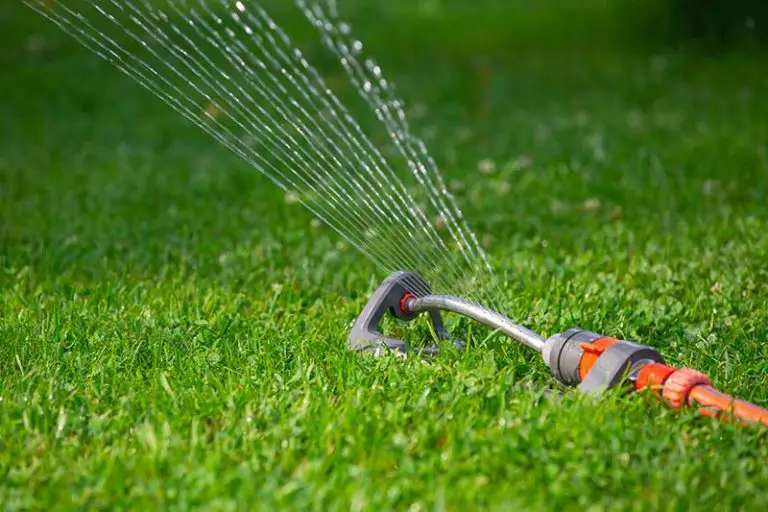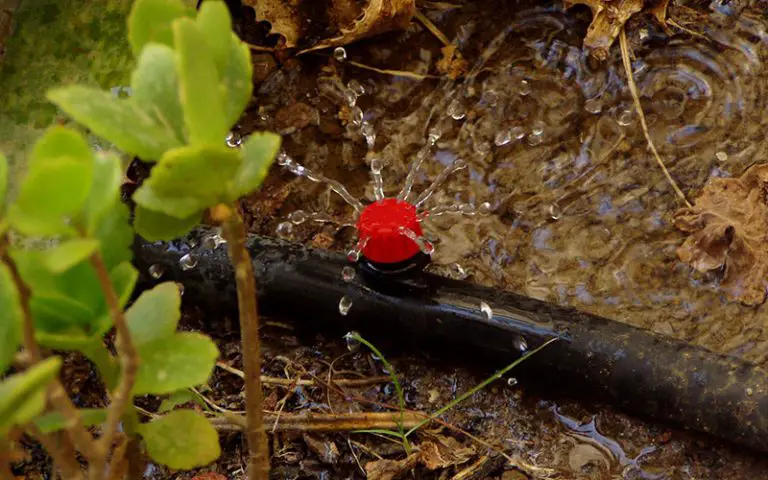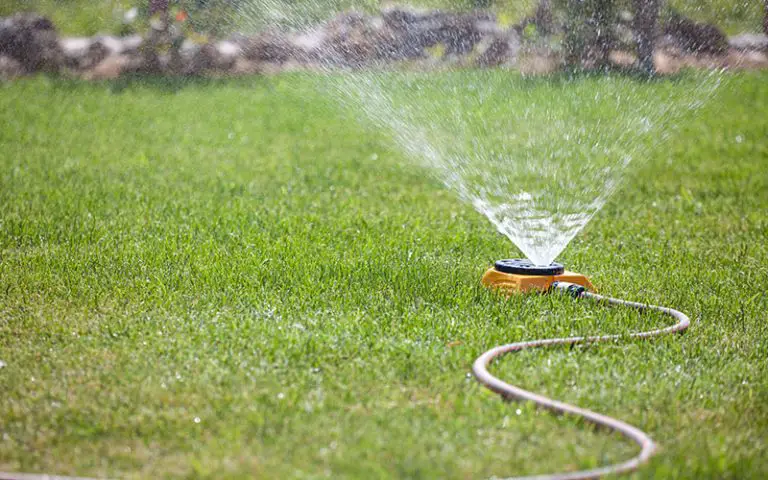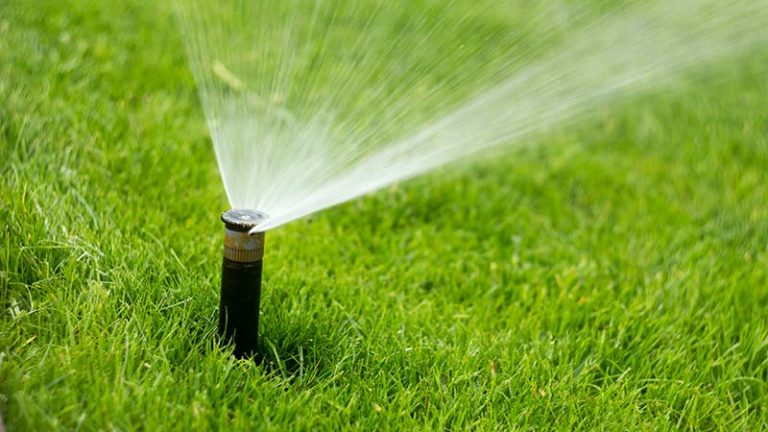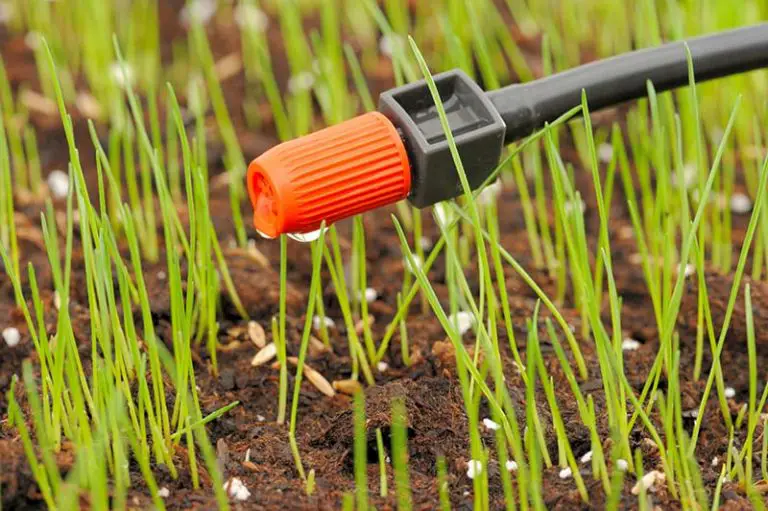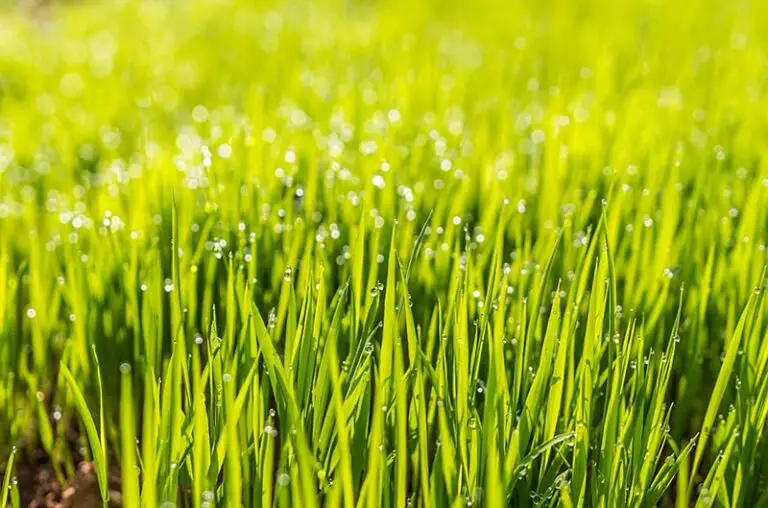How Long Should Sprinklers Run?
The secret to a luscious, luxuriant lawn lies in the watering. Water brings life, to us, to plants, and most importantly, to our lawns. However, watering your lawn the correct amount is the catch! Too little, and your grass will die, too much, and other issues begin developing. But for how long should sprinklers run?
Most sprinklers should operate for approximately 30 minutes, twice a week, to hydrate the soil one to one-and-and-half inches deep. Your local conditions, such as climate, soil type, the intended grass to be grown, and your sprinklers’ specifications will also play a role in the time spent watering.
Thirty minutes is a rough guide. To verily hit the optimal watering duration, poignant questions must be asked. How much water does my particular lawn grass need? Is it the wet or the dry season currently? What happens if I over or under-water my grass, and how would I know?
Watering Your Grass As Part Of A Lawn Care Program
To have genuinely splendid grass for most of the year, a lawn care program is highly recommended. This does not need to be over the top, but having a set time for watering, fertilizing, mowing, and other management interventions will help your lawn stay in tip-top shape.
Watering your grass on a schedule is a fundamental part of this program. The most crucial factor is to make sure that you water between one and one and a half inches per week to promote healthy lawn growth.
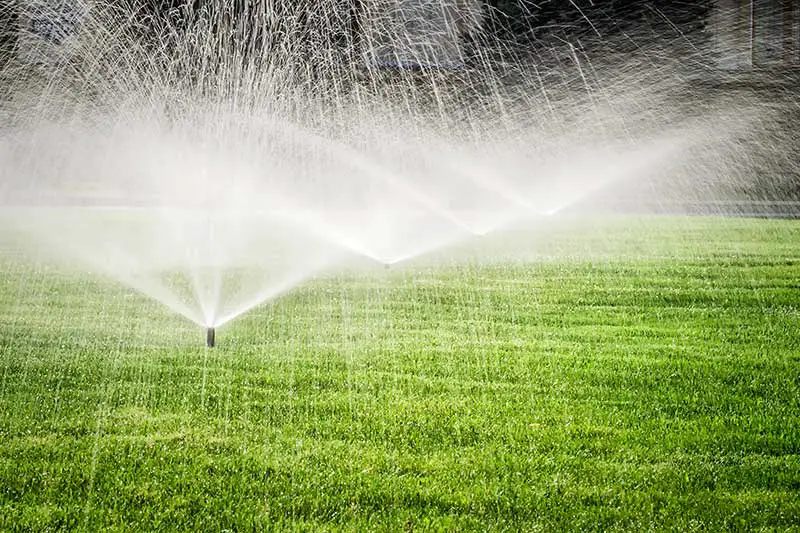
Six inches of water penetration into the soil (the depth we are looking for) should be achieved by watering an inch to an inch and a half. As a very rough guideline, watering your lawn for 20 to 30 minutes, two to three times a week, should produce this result.
Every lawn is, however, unique in its composition. Specific local conditions will influence the amount of water, as well as the duration of watering needed.
Factors Influencing The Amount Of Recommended Watering Required: Grass Type
Is your grass warm or cool-season growing, is it a well-established lawn, or newly lain/planted? The answers to these questions will determine the frequency and amount of watering required.
- Cool-season vs. warm-season grass
| Growing Season | Examples | Watering specifications |
| Fall (cool season) | BluegrassFescueRye | One and one and a half inches of watering weekly during the Fall months. When the first frost forms, watering can stop. |
| Spring and Summer | BermudaCentipedeZoysia | These grasses need to be watered less often. If, however, there has been little rain, water every second day (around three times a week). |
- Established vs. newly lain/planted lawns
| Amount of water | Frequency of watering | |
| Established | One to one and a half inches weekly (six inches of soil penetration). | Twice to three times a week, depending on the season. |
| Newly lain/planted | Water only so that the top inch of soil is wet. After the grass seedlings emerge, water so that two inches of soil are penetrated. When the grass is three inches high, one to one and a half inches weekly. | When still seeds, you can water every day, even twice a day, but lightly. Once the seeds germinate, three times a week, lightly. When the grass is three inches high, twice a week. |
Factors Influencing The Amount Of Watering Required: Climate And Time Of Day
The amount of sunlight, temperature, and rainfall all help or hinder watering.
During the wet season, sprinklers need to work less.
During the dry season, sprinklers will potentially work more or less. If you are in an area that receives frost, most plants will go into a dormant phase. It is often best to leave them this way until the start of spring.
If, however, you are in an area that does not receive frost, or has a dry season during the summer, then watering one to one and a half inches would be ideal.
The recommended time to water your lawn is between four and six in the morning; this will achieve the most significant amount of water penetration and retention, but anything before ten in the morning is okay. Avoid watering at night as the moist, cooler conditions allow for fungus and bacteria to thrive, which could cause your lawn to catch diseases.
Factors Influencing The Amount Of Watering Required: Soil Type
The type of soil determines water retention and, therefore, the frequency and duration of watering. Clay soils need to be watered once a week, while sandy soils need to be watered around three times a week.
Factors Influencing The Amount Of Watering Required: Sprinkler Specifications
The type of sprinkler you use will also impact how long it runs. Different sprinklers deliver different amounts of water per minute. Most do come with instructions indicating their rate of watering (gallons per minute).
Some examples of sprinklers include:
- Garden Hose-end. They attach to a regular hose and have a lot of diversity in size and shape.
- Pop-up. These sprinklers come out of the ground on a timer. They water as per their control panel and return to their holes when done.
- Pulsating. These sprinklers rotate in a circle and send out jets of water.
- Oscillating. These sprinklers rotate from left to right and spray water vertically.
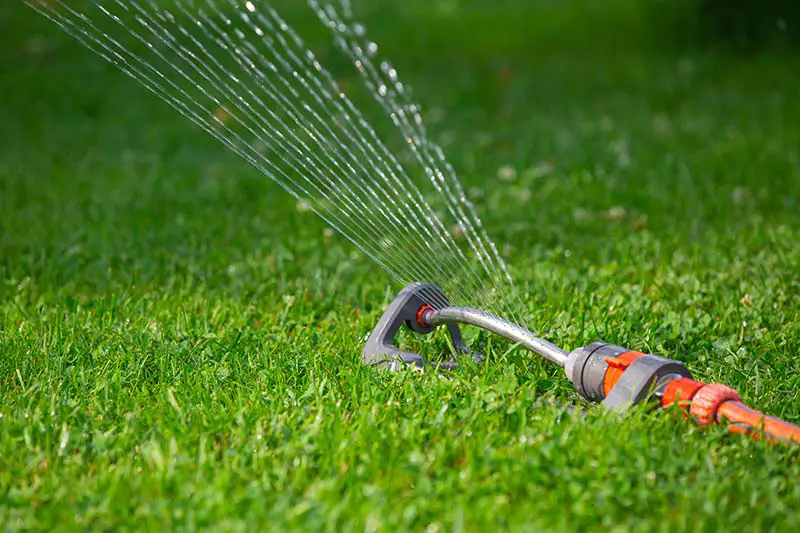
Testing How Long You Should Water Your Lawn
Every lawn is unique, so the only way to know how long to water it is to test it. There are several methods recommended by experts when evaluating. These include:
- The screwdriver test
Once you have finished watering the lawn, take a screwdriver of at least six inches and push it vertically into the soil. If it slides in easily the whole six inches, the watering was sufficient. If not, you need to water more.
- The tin can test
Place an empty can (of known size, preferably one inch) in an area where your sprinklers will reach it. While they are working, time how long it takes to fill up to half an inch in the can; this will help determine how long you need to water for over the week.
- Use the formulae
By using your lawn’s square footage multiplied by 0.62 gallons (this equals one inch of water per square foot) and then dividing that answer by your sprinklers flow rate (gallons per minute), you can determine how long it will take to water an inch of water.
- Digging up a section of the lawn
Although not ideal, this version of the screwdriver test leaves little doubt in how deeply the water penetrates. Dig out a section of lawn to six inches deep and see if it’s moist.
Cut Down on Water Waste
Water waste is inevitable when using an automatic sprinkler system, as there is no way to ensure that the timings are completely perfect for your lawn. However, there are plenty of ways to cut down on this water waste and make sure any and all water being used by your irrigation system is going to good use.
You can do this by ensuring that the system is working correctly and that there is no damage to the pipes or sprinkler heads that could lead to wasted water. Ensuring the water pressure is adequate and will run sprinklers effectively is also important.
The Consequences Of Over Or Underwatering Your Lawn
Why Is There A “Sweet Spot” In Lawn Watering?
The bottom line is, grass needs to have the correct amount of water to promote strong, healthy root development. Too much or too little water will have adverse effects on this establishment.
By less frequent “deep” watering, you allow water to penetrate to around six inches into the soil, which in turn causes grass roots to grow down to that length. These longer roots can better deal with fluctuating environmental conditions, absorbing nutrients and anchoring the grass plants better in the soil.
The Consequences Of Overwatering Your Lawn
Too much water is bad for your grass! To be sure, the lawn won’t dry out, but by waterlogging the soil, you allow for sub-optimal root development. This can lead to some other unfortunate conditions, including:
- Lawn thatching
Lawn thatching happens when the roots of the grass plants form a type of mat above the ground and below the leaves. This mat, in turn, prevents nutrients and water from making it to the actual roots. When the dry season/cold weather comes, these spots tend to die. The only way to remedy a thick layer of thatch is to dethatch your lawn.
- Conditions for disease
By allowing your lawn to flood, fungus and bacteria can start to multiply, infecting and killing off your grass. Fungal infestations that can devastate your lawn include brown patch lawn disease, dollar spot fungus, and snow mold. Treating these types of infestations can become expensive with the need for fungicides.
- Conditions for other undesirable plants
When the optimal conditions are gone and your lawn starts to take strain, other, less desirable grasses and plants begin to move in and take over. This again becomes expensive and labor-intensive as you try to remove the growth with herbicide or hand pulling.
The Consequences Of Underwatering Your Lawn
Underwatering or even light watering too frequently can also have detrimental results for your lawn.
Underwatering your lawn leads to the death of grass by desiccation. However, too frequent watering with smaller amounts causes roots to poorly establish, which leads to grass death during droughts/frosts.
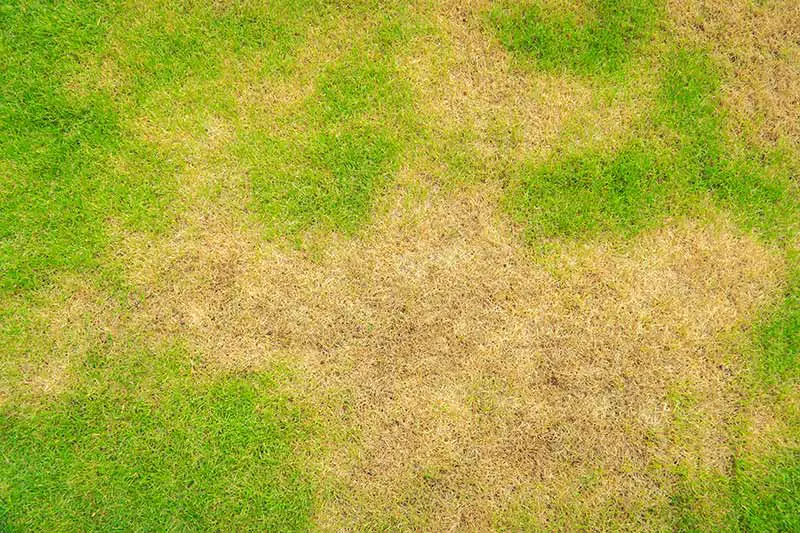
Our lawns generally tell us when we are under or over watering them. If your grass develops a grey pallor appearance or blades which start to curl, the lawn most likely needs water.
If mushrooms appear, or there are “soggy” patches with lots of run-off during watering, you are probably overwatering.
Conclusion
Sprinklers should water the lawn for as long as it takes to provide one to one and a half inches of water. This usually takes around 20 to 30 minutes. The watering frequency depends on several local factors, including climate, soil type, and the sprinklers’ specifications. The best way to know how much watering is required is to test and observe your lawn during and after watering.

